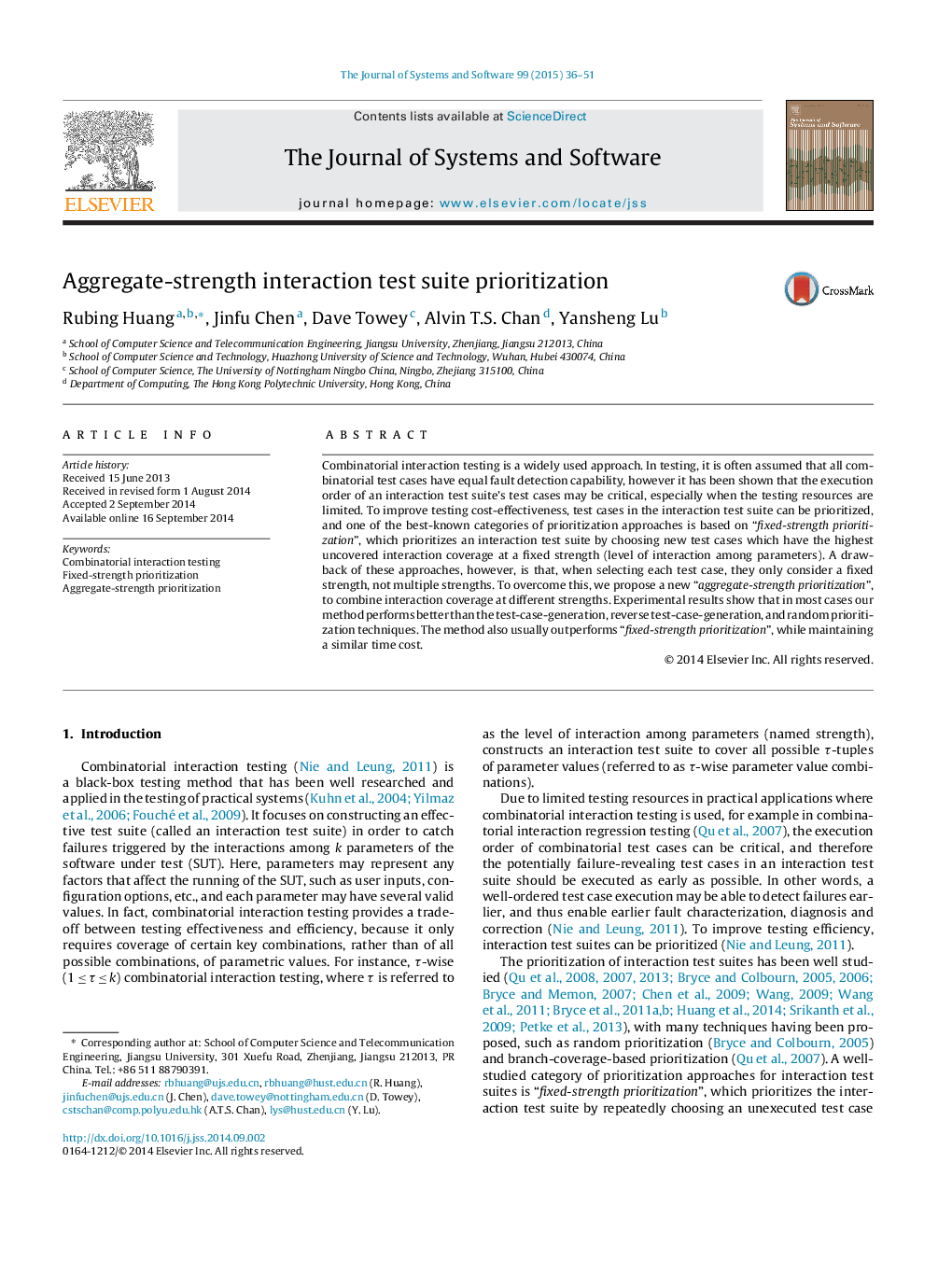| Article ID | Journal | Published Year | Pages | File Type |
|---|---|---|---|---|
| 461035 | Journal of Systems and Software | 2015 | 16 Pages |
•We propose a new category of prioritization methods of interaction test suites.•We propose a new dissimilarity measure for combinatorial test cases.•Three versions of our method are evaluated using simulations and empirical studies.•Our methods outperform better than other prioritization methods in most cases.
Combinatorial interaction testing is a widely used approach. In testing, it is often assumed that all combinatorial test cases have equal fault detection capability, however it has been shown that the execution order of an interaction test suite's test cases may be critical, especially when the testing resources are limited. To improve testing cost-effectiveness, test cases in the interaction test suite can be prioritized, and one of the best-known categories of prioritization approaches is based on “fixed-strength prioritization”, which prioritizes an interaction test suite by choosing new test cases which have the highest uncovered interaction coverage at a fixed strength (level of interaction among parameters). A drawback of these approaches, however, is that, when selecting each test case, they only consider a fixed strength, not multiple strengths. To overcome this, we propose a new “aggregate-strength prioritization”, to combine interaction coverage at different strengths. Experimental results show that in most cases our method performs better than the test-case-generation, reverse test-case-generation, and random prioritization techniques. The method also usually outperforms “fixed-strength prioritization”, while maintaining a similar time cost.
